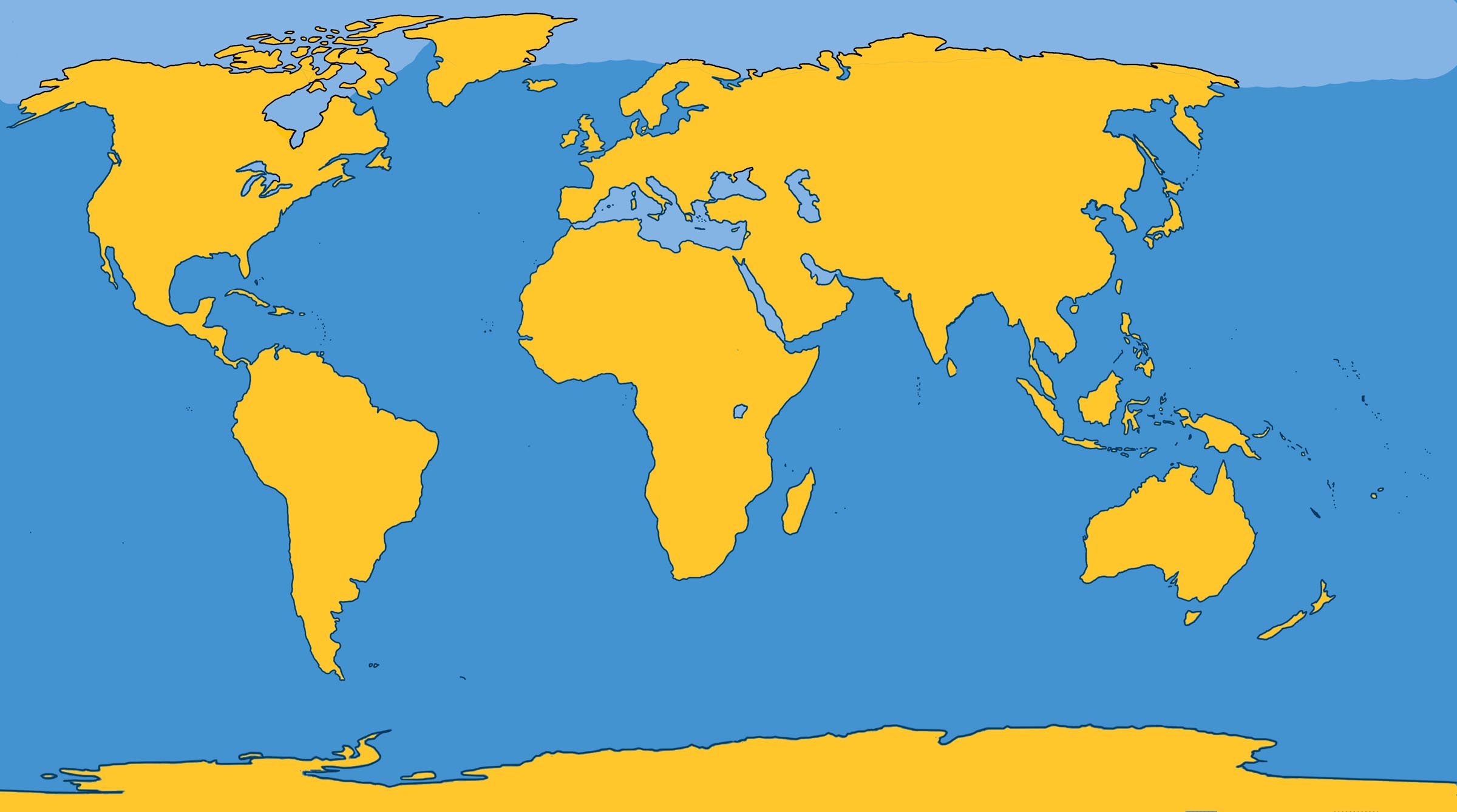Family: Balaenopteridae
Genus: Balaenoptera
Species: B. musculus (Linnaeus, 1758)
Taxonomic Note: Some researcher believe that a blue whale population smaller in size and located in the Southern Hemisphere have its own separate species classification as a dwarf blue whale. When and if this is globally recognized among taxonomists, a separate species page will be added to this site.
It is scarcely possible to imagine the immense size of the blue whale. It is the largest known animal ever to inhabit the earth, exceeding even the great dinosaurs. Adult blue whales grow to more than 90 ft (24.7 m) in length and may weigh more than 150 tons (136,000 kg). The blue whale’s mouth can be 20 ft (6 m) long, its flippers 10 ft (3 m) long, and its flukes 15 ft (4.5 m) from tip to tip. Its heart is the size of a Volkswagen Beetle and pumps 10.7 tons (9,700 kg) of blood throughout the massive body in vessels so large that a human could crawl through the aorta. The blue whale’s brain exceeds 15 lb (7 kg) and its stomach is large enough to hold over 2 tons (1,800 kg) of krill, the largest species of which, Euphausia superba, reaches only 2 in (5 cm) in length. A full-grown adult blue whale requires 2 tons (1,800 kg) of food each day to maintain its metabolic level. For all its size, the blue whale is an agile animal, and can maneuver well in close quarters.
Blue whales are an endangered species, having been hunted extensively over many decades. However, small populations exist in several regions of the world, with the largest population off the west coast of North America.
Physical Description: Very broad body. The rostrum, like a broad, pointed arch when seen from above, has one large ridge extending from the tip to the blowholes, and, occasionally, two very small and inconspicuous ridges, one on each side of the large central ridge. The region around and including the blowhole is raised above the dorsal region.
Color: The overall color is blue-gray, mottled with gray-white. Accumulated cold-water diatoms produce a yellow ventral region on some animals, giving the species its principal alternate and seldom-used name of “sulphurbottom”.
Fins and Flukes: Extremely small, ordinarily falcate dorsal fin is located three-quarters of the way down the body; it appears at the termination point of a lengthy dorsal ridge. Long, thin flippers are well developed with a curvature along the leading margins, a feature unique among the rorqual whales. The flukes are relatively small, slightly rounded at their tips, with a median notch.
Length and Weight: The largest blue whale captured reportedly measured 110 ft. (33.5 m), although the average pre-whaling, full-grown adult more likely measured 85 to 90 ft (26 to 27.5 m) in length. Large blue whales have been so severely reduced in numbers through commercial whaling that the average size today is between 75 and 80 ft (23 to 24.5 m). Although the largest blues at one time may have exceeded 150 tons (136,000 kg), today’s average is about 110 tons (100,000 kg).
Throat Grooves: More than 40 ventral grooves extending to the navel.
Baleen Plates: More than 300 baleen plates line each side of the upper jaw. Usually they are all black, but photographs confirm occasional lighter coloration.
Feeding: Small euphausids in Southern Hemisphere; euphausids, other crustaceans, and small schooling fish in Northern Hemisphere. The whales dive with mouth open, scooping in their prey. The throat distends with the entering water, and the prey is strained as the water passes out through the baleen.
Breathing and Diving: Twelve to 14 shallow dives at 10 to 20 second intervals are followed by a longer presumably deeper dive averaging 10 to 20 minutes, although it can last up to 50 minutes. Blues can dive to at least 350 ft (110 m). The blow produces a 30 ft (9 m) tall, slender, vertical spout similar to that of the humpback whale.
Mating and Breeding: Calves, 25 ft. (7.5 m), weighing 7.5 tons (6,800 kg) are born after an 11.25-month gestation period. A calf suckles about 100 gallons (380 liters) of milk, gaining more than 200 lb (90 kg) per day. At weaning after 7 months, the calf is approximately 53 ft (16 m) long and weighs about 23 tons (21,000 kg). Sexual maturity is attained at about 23 to 30 years, when males average 74 ft (22.5 m) and females average 78 ft (24 m). Calving occurs at intervals of 2 to 3 years.
Herding: Blue whales are fond individually or in groups of up to several dozen spread out over many miles. Pairs are very common.
Distribution: Small numbers of blue whales may be found in all oceans of the world.
Migration: Northern Hemisphere populations move north to polar regions in the spring; Southern Hemisphere populations move south to polar regions in autumn.
Natural History Notes: While reports of blue whales breaching are rare, whale observers Stanley Minasian, Richard Sears, Lloyd Parker and pilot Bill Riffe observed a series of spectacular breaches from the air 10 miles (16 km) northeast of Danzante Island in Mexico’s Sea of Cortez in March of 1983. Two blue whales were observed, one estimated at 70 ft (21 m) and a smaller animal estimated at 56 ft (17 m). The smaller animal breached five to eight times in succession, each time at a 45-degree angle, always landing on its stomach. The breaches reduced in intensity until finally only head slapping occurred, followed by normal breathing patterns. It has been suggested that blue whales live at least 60 years.
BLUE WHALE DISTRIBUTION








